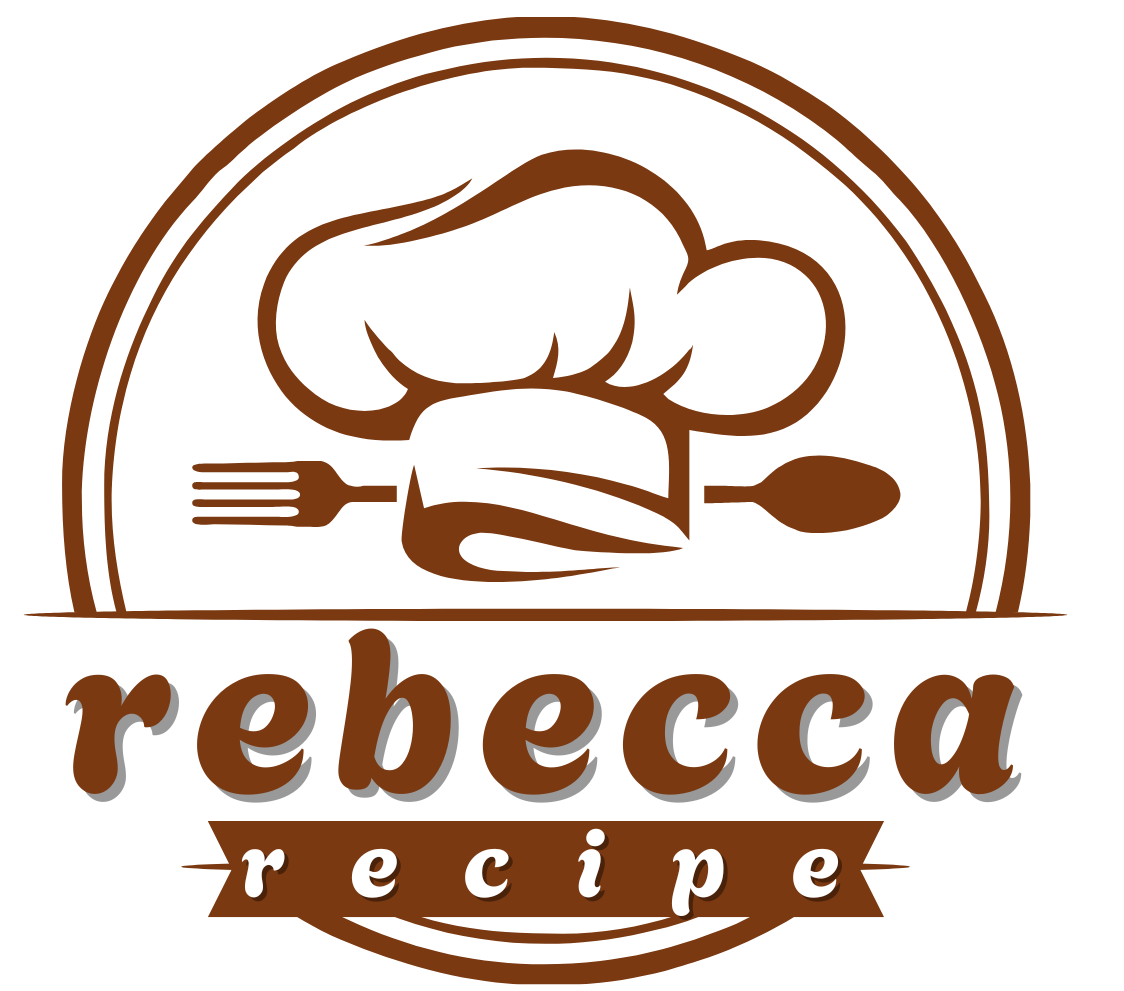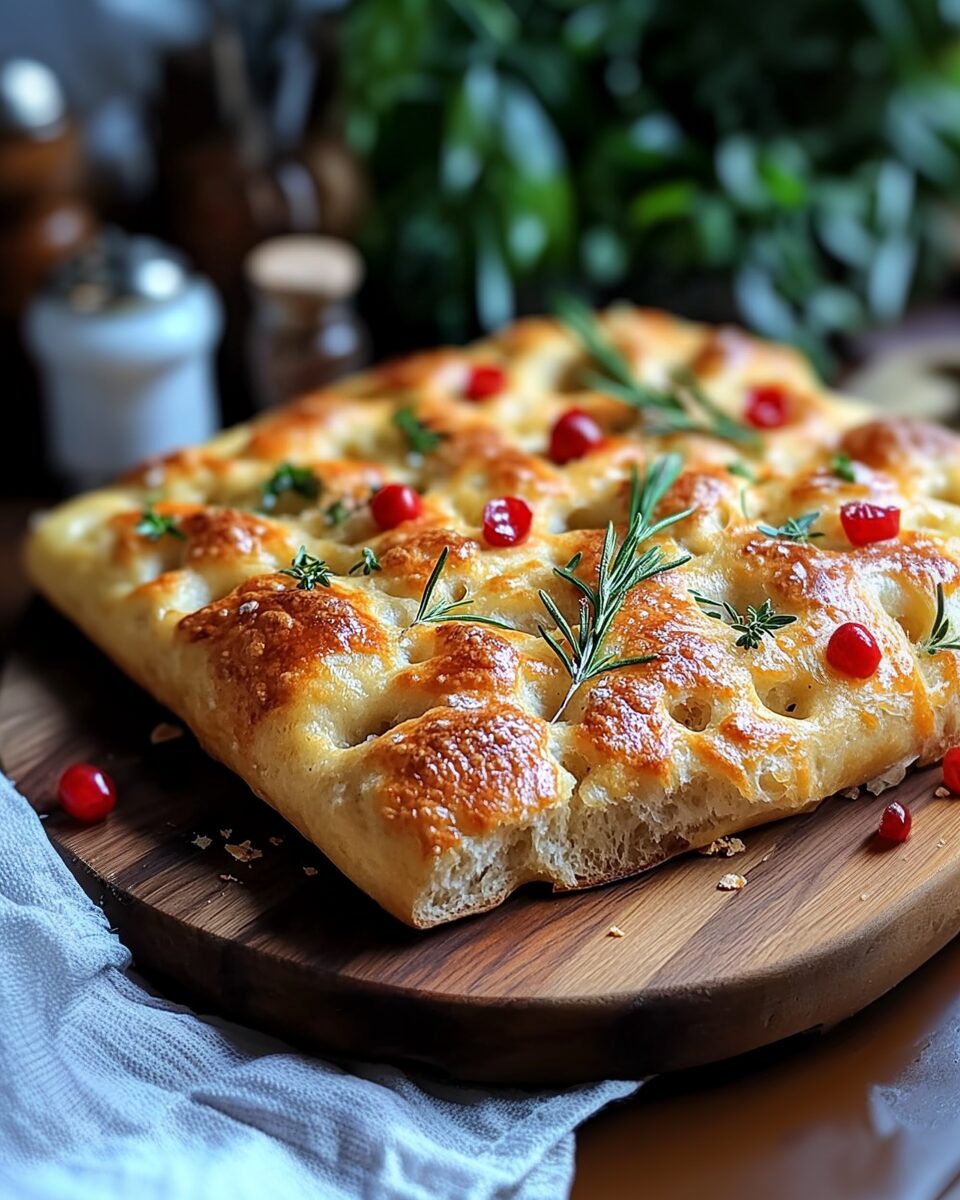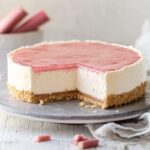Sourdough Discard Focaccia Bread is a delightful way to utilize excess sourdough starter, resulting in a bread that’s crispy on the outside and airy on the inside. This versatile bread serves as an excellent appetizer, side dish, or even a base for sandwiches.
Full Recipe:
Ingredients
Dough:
- 1 cup (240g) sourdough discard
- 3 cups (360g) all-purpose or bread flour
- 1 cup (240ml) water
- 1/4 cup (60ml) olive oil
- 1 teaspoon (6g) salt
- 1/2 teaspoon active dry yeast (optional, for quicker rise)
Optional Toppings:
- Fresh rosemary
- Sea salt flakes
- Cherry tomatoes
- Garlic cloves
- Olives
Directions
Prepare the Dough:
- In a large bowl, combine sourdough discard, flour, water, and salt until a shaggy dough forms.
- Knead the dough by hand or with a stand mixer until smooth and elastic.
- If using yeast, dissolve it in warm water and incorporate it into the dough for a quicker rise.
First Rise:
- Place the dough in a lightly oiled bowl, cover, and let it rest at room temperature until it doubles in size. This may take several hours.
Shape the Dough:
- Generously oil a baking pan. Transfer the risen dough onto the pan.
- Using your fingers, gently stretch and dimple the dough to fit the pan, creating the characteristic focaccia texture.
Second Rise:
- Cover the pan and allow the dough to rise again until puffy and bubbly.
Add Toppings:
- Drizzle olive oil over the surface of the dough.
- Sprinkle with sea salt flakes and add desired toppings like rosemary, tomatoes, garlic, or olives.
Bake:
- Preheat the oven to 425°F (220°C).
- Bake for 25 to 30 minutes, or until golden brown and crispy on the edges.
Cool and Serve:
- Remove from the oven and let it cool slightly before slicing. Enjoy warm or at room temperature.
Nutritional Facts
Per serving (assuming 12 servings):
- Calories: Approximately 296 kcal
- Carbohydrates: 44g
- Protein: 7g
- Fat: 10g
- Saturated Fat: 1g
- Sodium: 391mg
- Fiber: 2g
- Sugar: 3g
The History of Focaccia Bread
Focaccia has been a staple of Italian cuisine for centuries. Its origins trace back to Ancient Rome, where it was known as panis focacius, a flatbread cooked on a hearth or an open fire. Over time, this simple bread evolved into the beloved focaccia we know today, characterized by its dimpled surface, crisp crust, and olive oil-rich texture.
Traditionally, focaccia was made using yeast as the leavening agent. However, with the resurgence of sourdough baking, many home bakers and chefs have begun incorporating sourdough discard into their recipes. This not only imparts a unique flavor but also makes the bread more digestible due to the natural fermentation process of the sourdough starter.
Different regions of Italy have their own variations of focaccia. For instance, focaccia Genovese is a thin, crisp version from Genoa, while focaccia barese from Bari often includes mashed potatoes in the dough for extra softness. The addition of sourdough discard is a modern twist that enhances both the taste and texture of this ancient bread.
Benefits of Using Sourdough Discard
One of the most significant advantages of this recipe is that it helps reduce food waste. Sourdough discard, which is often thrown away during the feeding process, can be repurposed to create delicious baked goods like pancakes, crackers, and, of course, focaccia bread. By incorporating discard into your baking routine, you not only save resources but also gain a deeper appreciation for sustainable cooking.
Another benefit of using sourdough discard is the enhanced flavor it provides. Unlike commercial yeast, which offers a relatively neutral taste, sourdough discard carries subtle tangy notes that add complexity to the bread. This natural fermentation process also helps break down gluten, making the bread easier to digest for those with mild sensitivities.
Additionally, sourdough discard contains beneficial bacteria and enzymes that contribute to gut health. While the heat from baking eliminates most of these probiotics, the fermentation process still helps create a bread that is healthier and more nutrient-rich than standard white bread.
The Art of Making Perfect Focaccia
Making focaccia is as much an art as it is a science. Achieving the perfect balance of crispiness and airiness requires attention to key elements such as hydration, fermentation time, and proper handling of the dough.
One of the defining characteristics of focaccia is its high hydration level, which contributes to the bread’s light and open crumb. Using enough water in the dough ensures a softer texture while allowing for beautiful air pockets to develop during baking. Hydration levels typically range from 70% to 80%, meaning for every 100 grams of flour, 70-80 grams of water should be used.
Fermentation time is another crucial factor. Unlike traditional yeasted bread, which rises quickly, sourdough discard focaccia benefits from a slower fermentation process. Allowing the dough to rest for an extended period helps develop its signature flavor and improves its overall texture. Some bakers prefer an overnight fermentation in the refrigerator to enhance the depth of flavor even further.
Dimpling the dough before baking is also an essential step. This process helps distribute the air pockets evenly while creating indentations that hold the olive oil and toppings. The dimples contribute to the characteristic focaccia texture, ensuring that each bite is full of rich, savory flavor.
Customizing Your Focaccia
One of the joys of making focaccia is the endless possibilities for customization. Whether you prefer a classic version with rosemary and sea salt or a more adventurous take with unique toppings, this bread serves as a blank canvas for creativity.
Popular Topping Ideas:
- Herbs and Spices: Fresh rosemary, thyme, oregano, and basil add fragrance and flavor.
- Vegetables: Cherry tomatoes, caramelized onions, roasted garlic, and bell peppers bring sweetness and texture.
- Cheese: Parmesan, feta, and mozzarella create a rich and savory taste.
- Meats: Prosciutto, pancetta, and anchovies add a salty, umami depth.
- Sweet Variations: Honey, figs, and walnuts can turn focaccia into a dessert-like treat.
Experimenting with different toppings allows you to personalize the bread to suit any occasion. Whether you want a simple rosemary and salt version for dipping in olive oil or a fully loaded focaccia with multiple toppings, the possibilities are endless.
Serving and Pairing Ideas
Focaccia is incredibly versatile and pairs well with a variety of dishes. Here are some serving ideas:
- Appetizer: Serve warm slices with a side of olive oil and balsamic vinegar for dipping.
- Sandwich Base: Use focaccia for sandwiches with fillings like grilled chicken, fresh mozzarella, and pesto.
- Side Dish: Pair with soups, salads, or pasta for a complete meal.
- Brunch Option: Top with eggs, smoked salmon, or avocado for a savory breakfast treat.
Focaccia also makes an excellent addition to cheese boards and charcuterie platters. Its rich olive oil flavor complements aged cheeses, cured meats, and fresh fruits beautifully.
Storing and Reheating Focaccia
To keep your focaccia fresh, store it in an airtight container at room temperature for up to two days. If you plan to keep it longer, freezing is the best option. Wrap individual slices in plastic wrap and store them in a freezer-safe bag for up to three months.
To reheat, place the focaccia in a 350°F (175°C) oven for 5-10 minutes until warmed through. Avoid using a microwave, as it can make the bread chewy instead of crispy.
Conclusion
Sourdough discard focaccia bread is a delightful fusion of tradition and sustainability. By repurposing sourdough discard, you reduce food waste while enjoying a delicious, artisanal bread that’s easy to customize and perfect for any meal. The combination of olive oil, crisp edges, and an airy crumb makes focaccia an irresistible treat for home bakers of all skill levels. Whether you prefer a classic rosemary and sea salt version or an elaborate topping masterpiece, this bread allows for endless creativity in the kitchen. With a little patience and the right techniques, you can create a flavorful, homemade focaccia that rivals any bakery’s offering.






